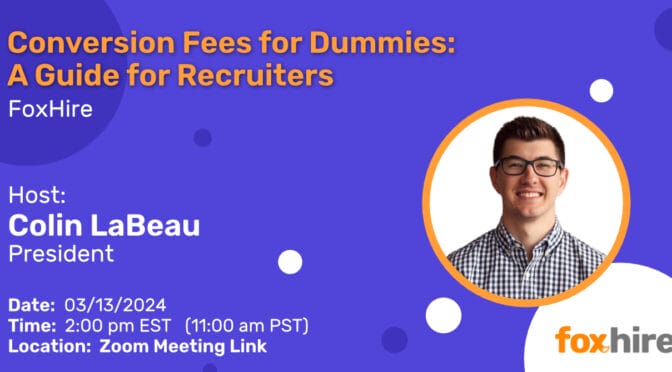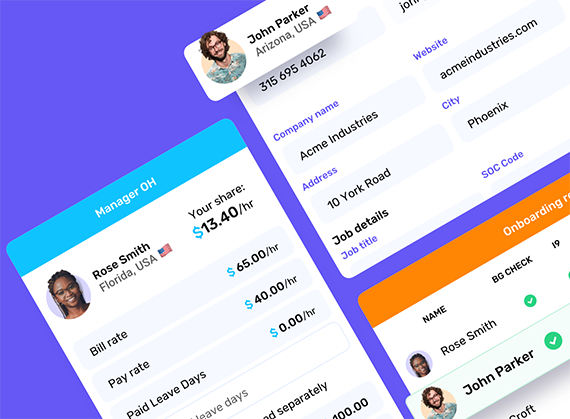You’re a recruiter. As a result, you want to make more placements. To make more placements, you have to know a lot of things (how to actually recruit would be nice). One of those things is how your clients hire new employees. Another way to term this process is a staffing management plan.
Okay, before we get too far into the woods, let’s start with an official definition, at least as official as we can get. However, we need a definition that’s not too complicated, but is comprehensive, so as to include the needs of various organizations. Easier said than done.
But let’s give it a shot, shall we?
What is a staffing management plan?
A staffing management plan is a plan designed to help organizations first identify and then acquire the workers they need at all levels and in all departments. Ideally, this plan will address the needs of the organization in multiple ways, depending upon its structure, its business model, and the way in which it completes projects and meets deadlines.
Despite our attempts to construct a simpler definition, a staffing management plan is multi-faceted, to say the least. Because of this, it must be comprehensive in nature but not convoluted. It must be efficient and not bloated.
Before we continue, a word about the types of workers that your clients are hiring. After all, that does affect the plan. Those workers are basically broken into two categories: direct hire workers and contract workers.
Direct hire staffing
So, what is direct hire? Direct hire positions are typically full-time positions with benefits. Companies usually make these hires when they have a long-term need. When the person is hired, they go directly onto the company’s payroll.
Contract staffing
Contract staffing positions are usually tied to a temporary need. As a result, while the person might work 40 hours (or more) per week, their employment is only for a set amount of time, anywhere from a few weeks to several months. In this case, the worker does not go directly onto the company’s payroll and is instead paid an hourly rate.
Keep in mind that in certain situations, a company will hire a worker on a contract basis and then convert that worker to a direct hire position after a certain amount of time. This situation is called a contract-to-direct hire, or contract conversion.
So with that in mind, let’s attack the inner workings of a staffing management plan.
Example of a staffing management plan
What is a staffing plan going to consist of in terms of hiring strategy? A staffing management plan should take into account all types of hires within an organization. That’s because the organization will choose whatever hiring method makes the most sense for a specific situation. Most of the time, a direct hire is the answer. However, it’s not the answer ALL of the time. If that was the case, then nobody would get hired on contract.
Remember, a staffing management plan must be comprehensive. In many ways, a staffing plan example will have close similarities to the recruitment process steps. As a result, developing a staffing plan should include all of these contingencies.
Below are the steps involved in developing a staffing management plan:
#1—Identify staffing need.
This is always the first and most critical step, because how can you get what you want unless you know what you want? In this case, though, an organization certainly wants more than one thing. As a result, there is more than one need to identify:
- Department business goals and/or project deliverables
- Candidate hard skills
- Candidate soft skills
- Type of worker or workers (direct hire, contract, or contract-to-direct)
What’s even more important, though, is that everybody involved with creating the plan agrees on the needs. Everybody must be on the same page. If there is a miscommunication among key personnel involved in the process, it sets the whole thing up for failure. And nobody likes failure.
#2—Establish timelines.
There are two types of timelines associated with the staffing plan: the hiring timeline and the employment guideline:
Hiring timeline
When should the workers be hired? Now? In two months? Six months from now? Without a timeline for when the hires should happen, there won’t be deadlines associated with the hires. Missing hiring deadlines within the framework of a staffing management plan is a no-no. It delays the meeting of the needs outlined above.
Employment timeline
In other words, how long will the person be employed by the organization? In a direct hire situation, the answer is easy. They’ll theoretically be employed for as long as they want to be employed… or as long as the company wants to employ them. However, in a contract situation, the worker is hired for a set amount of time, as described above. We refer to these workers as contingent workers. This is an important consideration when dealing with special projects that bring with them definite deadlines.
#3—Establish (and clarify) budget considerations.
Who’s going to pay for all of this hiring? Good question, and it’s one that must be answered in every staffing management plan. Direct hire workers and contract workers are often paid from separate budgets. Since that’s the case, the way in which they are handled are different. For example, during a hiring freeze, there are no direct hires, but there can still be contract hires.
More than anything, though, hiring budgets must be established, clarified, and approved before the hiring ball gets rolling. Those people who have attempted to hire without official budget approval can attest to the headaches that follow.
#4—Devise and implement talent acquisition strategies.
Now we’re to the fun stuff: actually hiring people! As you might imagine, there are many different ways for recruiting top talent. One reason is that there are different types of talent. That talent can be divided into two categories: active job seekers, and passive candidates.
Active job seekers
As the name indicates, these are people who are actively looking for new positions. They’re doing so because they’re either unemployed or they are employed but they’re unhappy in their current job.
Passive candidates
These are people who are fully employed. While they may not be actively seeking a new job, they would be open to exploring opportunities, especially if they’re better than the one they current have.
The point is this: different types of candidates require different types of strategies. An active job seeker will jump at an online job board posting. A passive candidate? They won’t. Why? Because they probably haven’t even seen it. They’re not looking for jobs online. If your staffing plan is only going after active job seekers, it may seems like there is a skills gap. Hunting for those great passive candidates is going to help with bridging the skills gap (that may not have actually existed).
But if a search consultant contacted them and presented an opportunity? That might intrigue them. An organization can’t hire the people they want if those people don’t even know that the organization is trying to hire.
#5—Assemble and implement an on-boarding program.
When an organization hires a worker, the organization wants the worker to become as productive as possible in as little time as possible. That’s just one reason for this step. Another reason is that new employees want to feel as though they made the correct decision. They want to know that accepting the company’s offer of employment was the right thing to do. If they’re on-boarded in an appropriate fashion, then they’re more likely to think that’s the case.
When does the on-boarding process begin? As soon as the candidate accepts the offer! It does NOT start the day the person begins their employment with the company. If on-boarding measures are not taken during the two-week period between offer acceptance and the start of employment, then that person is at risk for a fall-off. Just like failure, nobody likes fall-offs.
#6—Identify and create appropriate training materials and procedures.
To be sure, training should be part of the on-boarding process. However, we’re not talking about just that training. We’re talking about any and all training that will help the new employee meet the needs of the organization, as outlined in the first item on our list.
Training is not something that’s just done once and stops. Training should be ongoing, especially in terms of how said training can help the employee become more productive and provide more value to the organization. Training that will help the employee in their career should also be considered, because any training that helps the employee will theoretically also help the company.
Identifying training materials is just one part of this step, though. The creation of a process or procedure for implementing that training is just as important. If the training exists, but nobody uses it, then what good is it?
#7—Track the effectiveness of the plan.
As they say (whoever they are), you can’t improve something unless you measure it. How effective is the staffing management plan? In other words, how good are the hires? Of course, this is something that can only be tracked over time. There are a number of things that should be tracked during that time:
- How productive and valuable the employee is
- The engagement level of the employee
If the employee is highly productive and valuable, how long the employee stays with the company (more applicable in direct hire situations)
The effectiveness of a staffing plan can be broadly measured by the quality of the hires it produces, as well as the retention rate of those hires over time.
Developing a staffing plan for project management
So, as we stated in the first sentence of this blog post, you’re a recruiter. You have clients. Those clients have hiring needs. Hopefully, those clients have a staffing management plan. So how do you “connect the dots” and ensure that you can meet all of the needs that their plans have?
Well, when it comes to direct hires, that’s easy. More than likely, you’re a direct hire search firm. However, as we’ve already established, the needs of organizations extends well past just direct hires. Those needs also include hiring workers on a contract basis and even first hiring them on a contract basis and then converting them to a direct hire at a later date.
Adding contract staffing to your business model allows you to meet ALL the needs that arise as a result of a company’s staffing management plan. That’s because when you do so, you have options and recruiting solutions that will help your clients carry out their plan.
We’re nearing the end of this year. That means companies and organizations are putting together their plans for the New Year? How much are you and your recruiting firm a part of their plans? Would you like to be a bigger part? Then consider adding contract staffing to the list of services that you can offer. Ultimately, the equation is a simple one:
More services = more options = more solutions = more job orders = more placements
This is made even easier when you use contract placement services to help you. A recruitment back-office solution or employer of record takes care of all the legal, financial, and administrative details associated with offering contract staffing and making contract placements.





